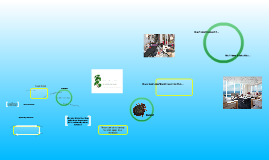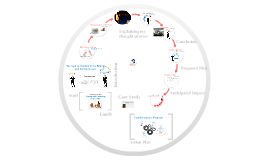Tradeshow
Transcript: A Tradeshow B M Advanced Warehouse Advanced Warehouse An advanced warehouse is an option for exhibitors to deliver their trade show booth and materials during the weeks leading up to an event. The show decorator accepts and stores the freight at an off site location, know as the advanced warehouse, up to 30 days prior to the start of the show. What is it? PRO's of the Advanced Warehouse Why is it beneficial? Guaranteed On-Time Delivery: Once delivered to the advanced warehouse, the event decorator becomes responsible for transporting the freight to the show site. Avoid Marshalling Yard Wait Time: These shipments are brought directly to show site by the decorator during exhibitor move-in. Since the decorator trucks do not wait in marshalling yards, exhibitors will avoid the possibility of receiving wait time surcharges. Wider Delivery Window: The advanced warehouse is an off-site facility and accepts exhibitor freight over a period of weeks, giving exhibitors flexibility in delivery. Advanced Warehouse Moves First: Exhibitors utilizing this option will be the first to receive their materials on the show floor and can begin the process of setting up their exhibit. Peace of Mind: Advanced preparation can help exhibitors by making the event more organized and less stressful. Increased Drayage/Material Handling Rates: Exhibitors who ship to the advanced warehouse will pay approximately 30% more in drayage charges. (For example, according to a recent show we reviewed, the CWT (Weight per 100 lbs.) drayage charge for a crated or skidded shipment going to the advanced warehouse was $169.00 while the show site rate was $128.50). Additional Handling: Exhibit material will be unloaded upon arrival, stored at the warehouse, loaded in preparation for the show and transported to the show site. The additional touches could result in damaged freight. Overtime Charges if You’re Late: Exhibitors should be cautious of the dates and hours freight is accepted at the advanced warehouse. If your carrier arrives outside of the hours or days listed in the show kit, overtime surcharges will apply. Wait Times: There is usually a surge in deliveries during the last week the advanced warehouse is accepting freight. If there is a line of trucks waiting to be unloaded, carrier wait times may apply. The Advanced Warehouse Does Not Accept Everything: The advanced warehouse only accepts pallets, crates, packaged carpets/flooring, and cases. Pad-wrapped and un-skidded items are required to ship direct to show site. CON's of the Advanced Warehouse Reduced Preparation Time: Exhibitors who need extra preparation time should opt for show site delivery. If shipping to the advanced warehouse, exhibitors must be prepared well in advance of the trade show. Last minute changes/updates will have to be done at show site. Freight Storage at the Advanced Warehouse: Sometimes, freight shipped to the advance warehouse is not stored IN the warehouse but loaded into older cartage trailers that will sit in the yard of the warehouse until they’re hauled to the exhibit hall. There is potential for damage from weather (extreme heat/cold and rain) and product theft from trailers that don’t get locked after freight is loaded. If this is a concern, contact the show decorator and ask them where your freight will be stored before deciding to ship to the advance warehouse. Cont. Marshalling Yard Marshalling Yard What is it? The marshalling yard is a location where the trucks delivering to the trade show wait before proceeding to the freight dock for unloading. The marshalling yard may be adjacent to the convention center or it may be off site. If you are unfamiliar with the functions of a marshalling yard, they handle the check-in, check-out, weighing and dispatching of trucks coming in and going out of a trade show. Convention facilities have a limited number of dock spaces to unload/load freight. The marshalling yard keeps track of the freight dock doors and dispatches trucks for unloading/loading in the order they arrived and checked-in. This keeps the facility and the surrounding streets clear of truck traffic and maintains an orderly flow of freight. Continued The marshalling yard process is as follows: All delivering carriers and privately owned vehicles must check in at the Marshalling Yard prior to show site deliveries. All inbound shipments will be weighed at the Marshalling Yard to obtain the gross or heavy weight. All inbound shipments must be accompanied by a certified weight certificate and Bill of Lading. At the Marshalling Yard, drivers will be assigned a number and will be dispatched to the appropriate dock as space is available. Waiting time at the Marshalling Yard should be anticipated by your carrier. Every effort is made to keep this waiting time at a minimum. However, the waiting time depends on many factors, including the number of vehicles arriving to unload/load, the type of loads being unloaded, the number of booths on a truck, etc. After BOL

















